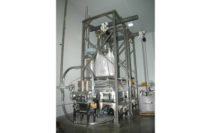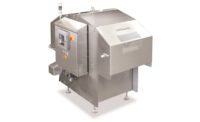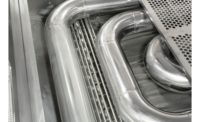Reliability, flexibility, consistent product quality, easy sanitation and high-volume output are just some of the things bakers and snack producers want from a new oven or fryer. Equipment manufacturers are introducing new and updated models that meet these and additional requests.
Ovens, proofers and fryers may be the hardest-working machines in commercial bakeries, typically producing thousands of perfectly baked goods each day, at high temperatures. So when bakers and snack manufacturers get ready to invest in a new oven or fryer, they have a list of wants and needs that the unit must meet. Equipment manufacturers are taking note and making sure their models have the features customers want, and others they might not have considered.
Dunbar Systems Inc.’s customers are looking for ovens and proofers that are reliable, offer consistent product bake quality and are easy to operate and clean, says Jim Diver, director of sales for the Lemont, IL-based company, which sells commercial ovens, proofers, retarders, mixers and other bakery equipment and supplies.
The Auto-Bake Serpentine Baking System, for which Dunbar Systems is the exclusive North American representative, features ovens and proofers that can handle all types of baked products, but are typically used to make cakes, cookies, croissants and yeast-raised Danish products. According to Diver, the system offers consistent product quality and production via recipe-controlled programmable logic controller (PLC) settings that ensure repeatability, are easy to use and require minimal operators on the production line.
The system offers numerous other benefits: An easy-to-clean design that gives sanitation personnel access to all of the system’s surfaces from either side of the unit; reduced energy usage (30% or more over conventional systems); access to immediate line performance and production data; and a robust construction for long life. In addition, the Auto-Bake Serpentine oven is compact and requires less floorspace than a conventional oven with comparable output. It’s sized to allow bakers to install multiple production lines in a limited amount of floorspace.
Like Diver, Jerry Barnes, vice president, engineering, at Clayton, NC-based Baker Thermal Solutions and Stewart Systems, says customers most often want ovens that can “span a wide array of baking profiles and produce each one to a high degree of consistency.” The Lanham conveyorized oven does both.
Suitable for producing panned bread, rolls and sweet goods, the Lanham conveyorized oven features a Coloraider convection system and Baker Thermal Solutions’ Oven Process Control (OPC) bake-management software. “The Coloraider system was recently redesigned to provide excellent color control and consistency, while our OPC bake management software, introduced in 2013, moves beyond simple temperature control to optimize the bake profile,” Barnes explains.
The Lanham conveyorized oven Coloraider system recirculates spent energy from within the baking chamber. The system then delivers the heated air through an engineered set of manifolds and tubes for maximum convective effect. Fans with variable speed control provide “versatility and flexibility in handling a wide array of product types and shapes with exceptional lateral balance and very consistent color development,” says Barnes.
Controlling costs
“Overwhelmingly, customers are concerned with available investment capital,” says Mike Day, president of Banner-Day. “Upgrading a current oven, rather than buying new, is a great opportunity.” The Saginaw, MI, company manufactures oven combustion system equipment and controls, performs upgrades on existing ovens and provides equipment and control solutions to oven original equipment manufacturers (OEMs).
According to Day, bakers may be able to upgrade existing ovens with new controls and technology that meet current Occupational Safety and Health Administration (OSHA) and National Fire Protection Agency (NFPA) code requirements and enhance performance for 60-70% of the cost of a new oven. Banner-Day’s SmartBake control technology, for example, also enables manufacturers to phase in a project, if needed. The technology can be installed on a zone-by-zone basis with enhanced temperature control or fully integrated as TOC (Total Oven Control).
Safety is always important to bakers. Day says Banner-Day has increased the safety of its ovens by reconfiguring its oven gas trains to include a “valve proving system,” which reduces installation costs and the time needed to perform annual OSHA-required oven-safety inspections.
Another concern for bakers is short-term power interruptions, which require bakers to perform an oven purge before restarting the oven, says Day. “This cost of time and resources is significantly reduced through the use of the Banner-Day patented PIP (Power Interruption Protection) system,” he notes.
Improving energy efficiency
Operator behavior and how it impacts energy efficiency is also important to bakers. “Our goal is to help operators understand how their interaction with the equipment affects its efficiency,” says Scott McCally, thermal products manager at Stewart Systems, a Plano, TX-based manufacturer of ovens, proofers, conveyors and other equipment for high-volume bread and bun producers.
The company does this by displaying real-time utility consumption data—gas, power, water, steam and air—in the operator’s console (human-machine interface [HMI]). This information helps an operator understand how his or her actions affect the utility demand for Stewart ovens and proofers. In addition, the feedback reveals leaks in the system. “For years, we have integrated energy-efficient components [into our equipment],” McCally says. “Now, as we look to influence behavior, we aim to provide quality, real-time data to operator, so that they can make reasonable adjustments that add up to better margins.”
Energy efficiency also can affect product quality if the equipment is not designed correctly, says McCally. “An example of this would be when our oven goes to ‘low fire,’ because there’s a gap in production and, therefore, no demand for heat,” he explains. “If the product shows up before the oven has heated to the required operational temperature, then the front end of that product run can be negatively affected.”
Stewart Systems designs its ovens so they can respond quickly to demands, McCally says, adding that the company also programs within the limitations of a system, giving it, as precisely as possible, the time it needs to be ready when product enters.
While different types of products require different heat loads, the efficiency of a system is product-independent, McCally explains, adding that the most significant way for bakers to increase energy efficiency is to reduce wasted energy. “Wasted energy comes in all forms, but focusing on bakery behavior, we find a huge opportunity to run our equipment on demand,” he explains. “Whether during a product changeover or some minor ingredient calamity, there are various times when all the equipment is running without product. This is a tremendous waste of energy, and why we offer optional on-demand programming in our equipment. We use a simple series of interlock signals to alert each piece of equipment when it’s time to get back to work. The amount of total energy savings depends on the behavior of the bakery.”
Frying perfection
Bakers and snack manufacturers that produce fried goods have many of the same concerns when buying a new fryer as those buying ovens.
“The biggest concern is always making a superior product,” says Don Giles, director of sales, Heat and Control, Hayward, CA. “If the product isn’t good, all the efficiency in the world doesn’t matter. Next are system efficiency, equipment reliability and ongoing technical support, all of which are very important.”
Heat and Control offers specialized fryers for kettle-style potato chips, potato sticks, corn and tortilla chips, taco shells and tostadas, nuts, pellet and extruded snacks, fruit-filled pies, toaster pastries, donuts and many other products. Its MasterTherm Kettle Fryer, a thermal, fluid-heated batch fryer, produces more than 500 finished pounds per hour of kettle-style potato chips. The unit’s full hood enclosure with a clean-in-place (CiP) system helps operators save energy by retaining heat and reducing exhaust volume to about 70% less than fryers using area hoods, says Giles.
Another Heat and Control fryer, the Unitized Vacuum, requires no external vacuum enclosure and operates at 10% or less of normal atmospheric pressure. “It boils off product moisture at a lower temperature than traditional fryers, and allows you to fry high-sugar products without browning,” Giles explains. It also enables operators to control acrylamide formation because they can keep oil temperature below the point at which acrylamide forms (248 deg. F or 120 deg. C).
For baked products, Heat and Control offers vertical spiral ovens that take up less floorspace than linear ovens, while delivering high capacities of uniformly baked product. Single- and twin-drum models are available.
David Moline, sales and marketing manager, Moline Machinery LLC, Duluth, MN, adds output to the list of factors bakers and snack producers take into account when purchasing fryers. “They want to make the most donuts they can with the space they have available,” he says. “It’s high volume, high capacity.” The company’s flagship fryer, the Libra, produce 1,600 to 4,500 dozen donuts an hour, depending on product fry time.
In addition, the Libra fryer is available with a choice of heating options—direct traditional, direct-fired gas, electric and hybrid (gas and electric)—enabling manufacturers to select the model most compatible with energy costs in their area. It also comes with continuous sediment removal, which keeps oil cleaner and makes sanitation easier.
“We’ve had customers with traditional fryers that have had to turn off their fryers once a week or more [for cleaning],” says Moline. “Now, they turn off their fryers once a month or once every two months. [Continuous sediment removal] is a newer thing for the donut market. It’s been around for a long time for fryers for other types of food products.”
Constant oil turnover is also important when making donuts. “You want to keep your oil as fresh as possible, and you want to get it turned over as fast as possible,” Moline explains. “The Libra was designed to minimize the amount of oil volume in the kettle, so you can turn it over as quickly as possible.”
Moline Machinery has made several upgrades to the Libra fryer since its introduction. “We’ve completely redesigned and simplified our gas trains,” says Moline. “It has automatic pressure sensing, and everything is PLC-monitored and -regulated.” Libra fryers can also be equipped with submergers to make products that need to be submerged in oil, such as yeast-raised donut holes, fried pies or other sweet goods.
Durability is another important factor for bakers and snack producers when selecting a fryer. “The simple act of heating and cooling a fryer is very fatiguing on metal,” explains Moline, adding that all of the company’s equipment is stainless steel. “If you’re doing that three times a week, it’s much harder on a fryer than if you’re doing it once a month, for example. It all ties back to getting sediment out continuously, which allow you to keep your fryers on and produce products on days where you would have had to clean.”
WP Kemper, A WP Bakery Group company, offers complete frying lines that address bakers’ and snack manufacturers’ requests for equipment that can produce high volumes of a variety of products, are easy to operate and clean and help reduce energy costs.
The WP Kemper Donut Line, for instance, operates at an hourly capacity of up to 20,000 Berliners (German-type donut balls, weighing between 17 and 90 g.) or up to 40,000 ring-shaped donuts, weighing between 17 and 65 g.), according to Patricia Kennedy, president of WP Bakery Group USA, Shelton, CT.
Dedicated to the production of different types of donuts and fried pastries, the Donut Line comes with eight to 14 rows and features the Soft Star dough divider and a patented system that enables low-scrap production of donuts, which results in the absorption of only a small amount of frying oil.
WP Kemper also offers a donut fryer that can be used to produce almost any type of fried product. The fryer allows bakers to make ball- and ring-shaped donuts made using the same equipment, and accommodates various adjustable turning stations that operate in an on/off mode. Cycle times are flexible, so the fryer has a broad temperature range.
Other features include gentle product handling; an infeed section equipped with a height-adjustable feeding belt; a discharge station equipped with an aligner control unit that operates in a vertical direction; oil vats with insulated bottom and sides; flexible filling units; and filling stations outfitted with an integrated electromagnetic flow-metering system for precise filling.
The fryer can be combined with a range of downstream equipment, from sugaring tables to automatic sugaring units, and is heated with various energy sources, including electricity, steam, natural or liquid gas.
“Much attention has been paid to the development and construction of the fat-treatment unit in order to ensure the highest possible frying oil quality and long usage times,” says Kennedy. “The frying vat can be combined with a capacitive level control, fat filtration unit and storage tank. Heating the frying oil in the storage tank to the desired temperature can save energy costs because the daily heat-up process of the fryer can then be reduced to a minimum. At the same time, the frying oil is less prone to oxidation, resulting in longer usage times.”
Another special feature is the fryer’s easy-clean design. The entire transport system, including heating rods, can be electrically lifted up from the frying vat, which has no welded seams at the bottom. The filling units are equipped with quick-release couplings and flushing programs integrated into the unit’s control. An intermediate wire belt at the fryer’s infeed section prevents flour and scrap dough from entering the frying vat.
Bakers and snack producers have as many requisites when selecting a new oven or fryer as they do products to bake or fry. Equipment manufacturers are listening to these requests and offering ovens and fryers that will enable their customers to turn up the heat on their competitors.











